Republic of Croatia (Hrvatska)

Last year we decided to visit what we could of the concentration camps that remain in Croatia today. Part of an effort to understand and recognize the history that is unfortunately being whitewashed over and slowly revised as time progresses. The same history that has repeated itself time and time again….and continues to do so throughout the Balkans.
The Jasenovac Death Camp:
Located along the Sava River that borders Croatia and Bosnia and Herzegovina is the death camp Jasenovac.
It was a particularly grey and dreary day, a day that absolutely matched our moods knowing what we were about to see.
Hearing stories of the atrocities that took place during its four year operation, I had no idea what to expect when we arrived. I know now that I was not prepared in the least…
This concentration camp was established during WWII in Slavonia by the Independent State of Croatia (the Ustaše)…a puppet state that grew out of Yugoslavia, loyal to Fascist Italy and Nazi Germany.


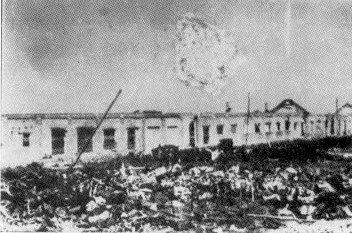
Keeping with Nazi SS ideology, the Ustaše were largely antisemitic and persecuted mainly Serbs, Jews, and Roma; also some Croatian and Bosnian Muslim political dissidents.

These fascist policies resulted in the murder and torture of (between 300,000 and 700,000) Serbs, Jews, Roma, Croatian and Bosnian Muslim political dissidents in a network of concentration and extermination camps.
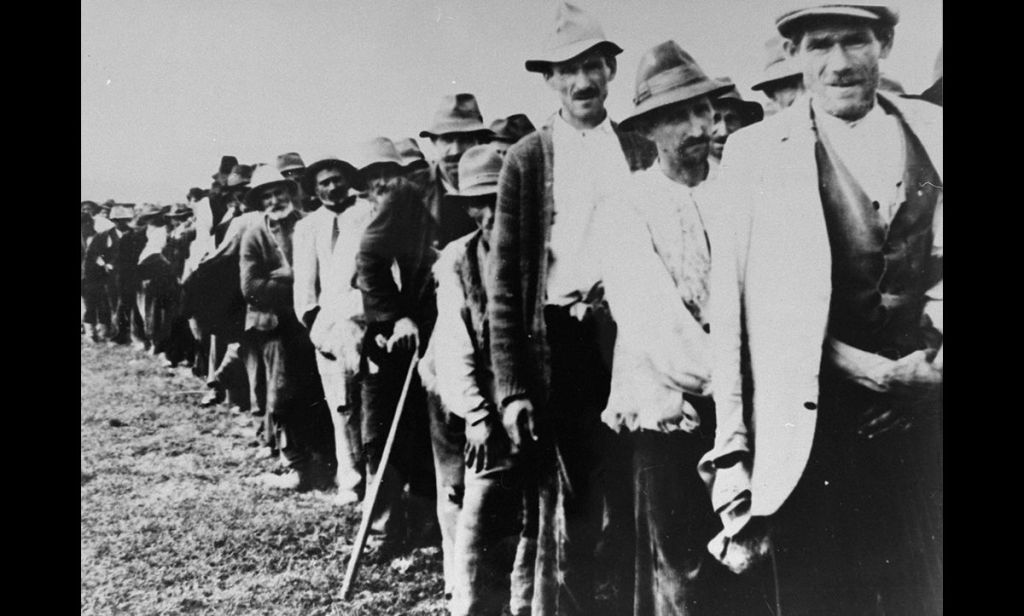
Jasenovac was actually a complex of five major and three smaller camps spread out over 240 square kilometers (150 square miles) in south-central Croatia.
One of the most notorious being the central Jasenovac camp, another being Stara Gradiška, the 5th sub-camp of the prison complex that served as a camp for women and children.
You can read about my visit to the Stara Gradiška camp here.
Conditions inside these camps were extremely poor, and many prisoners died from starvation and disease. The Ustaše camp guards were notoriously ruthless and cruel and many of the camp inhabitants were tortured and murdered.


The acts of murder and of cruelty in the camp reached their peak in the late summer of 1942, when tens of thousands of Serbian villagers were deported to Jasenovac from the area of the fighting against the partisans in the Kozara Mountains.
Most of the men were killed at Jasenovac. The women were sent for forced labor in Germany, and the children taken from their mothers; some were murdered and others were dispersed in orphanages throughout the country.

From December, 1941, to April, 1945, in Jasenovac, the Ustaše killed about 20,000 boys and girls of Serbian nationality.
They were executed in atrocious ways and also died, more than the adults, from illnesses, famine, thirst, and frost. The Ustaše would drown small children in the Sava River by tying up several of them in a sack and throwing them into the water.

Many children were slaughtered in Jasenovac in mid-September, 1942. The children were taken in 15 horse-drawn carts to the brickyard and burnt. During WWII the only place where there were special camps for children was Croatia. Mainly Stara Gradiška.
Estimates of the total numbers of men, women and children killed here range from 300,000 to 700,000. And yet, despite the scale of the crimes committed there, most of the world has never heard of Jasenovac.

Jasenovac was one of the most barbaric death camps of the Holocaust for the extreme cruelty in which its victims were tortured and murdered.
It was not the only death camp in fascist occupied Yugoslavia, but it was by far the largest and the one in which a majority of the some one million victims of racial genocide in World War II fascist Croatia were exterminated.


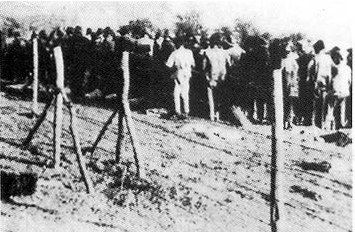





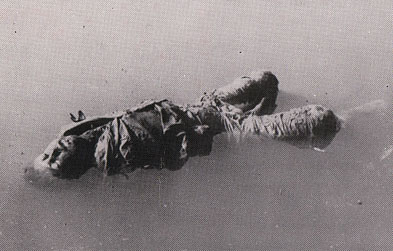
The significance of the Jasenovac camps lies in the way in which the crimes that were committed have since been concealed. Historians have called Jasenovac “the dark secret of the Holocaust” and “the suppressed chapter of Holocaust history.”
Unlike Stara Gradiška, the Jasenovac camp has been completely sanitized, no original structures remain only mounds of earth and hollows, that represent what was buildings, execution sites or mass graves. (Pictured below in 2019 from our visit)


Considering Croatia’s history with whitewashing of the horrors committed here during WWII, I’ll admit I was surprised to see a memorial and small museum dedicated to those who lost their lives at Jasenovac.
“The enormity of the crimes committed at Jasenovac, the fact that the majority of the victims were Serbs whho were killed simply for being Serbs, and the fact that the perpetrators included the Catholic Church, have made it an extraordinary and explosive issue that Holocaust deniers and historical revisionists cannot successfully manipulate for long should we focus all of our energies on bringing the truth to light. In doing so, we shall also unravel the whole ball of lies told about the history of Yugoslavia.“
From the Brochure of the Jasenovac Research Institute, written by JRI Research Director Barry Lituchy, (c) 2000
To the outside world, Jasenovac was presented as a work camp. The Ustaše’s propaganda tried to present the camps, both to their own people and to the world, as places of useful work and reformation.
The camp was presented in such a way that it seemed desirable to be in Jasenovac in that war time of general uncertainty, death, and poverty…without the slightest premonition of what was actually hidden behind the high reaching walls.
At the beginning of April 1945, the Ustaše were preparing the liquidation of the Jasenovac camp in order to remove the traces of their crimes before escaping.
“The ultimate liquidation of the camp was begun on April 20, when the last large group of women and children was executed. On April 22, 1945, under the leadership of Ante Vukotic, about 600 people armed with bricks, poles, hammers and other things, broke down the doors, shattered windows and ran out of the building. About 470 people were sick and unable to fight barehanded with the armed Ustaše, so they did not take part in the rebellion. The 150 meter long path to the east gate of the camp was covered by the crossfire of the Ustaše machine-guns, and many prisoners were killed there. A large number of them was killed on the wires of the camp. A hundred prisoners managed to break through the broken gate of the camp. Only 80 prisoners survived while 520 of them died in the first assault. The remaining 470 within the camp were later killed by the Ustaše.”
http://jasenovac.org/what-was-jasenovac/
The Stone Flower Memorial at Jasenovac
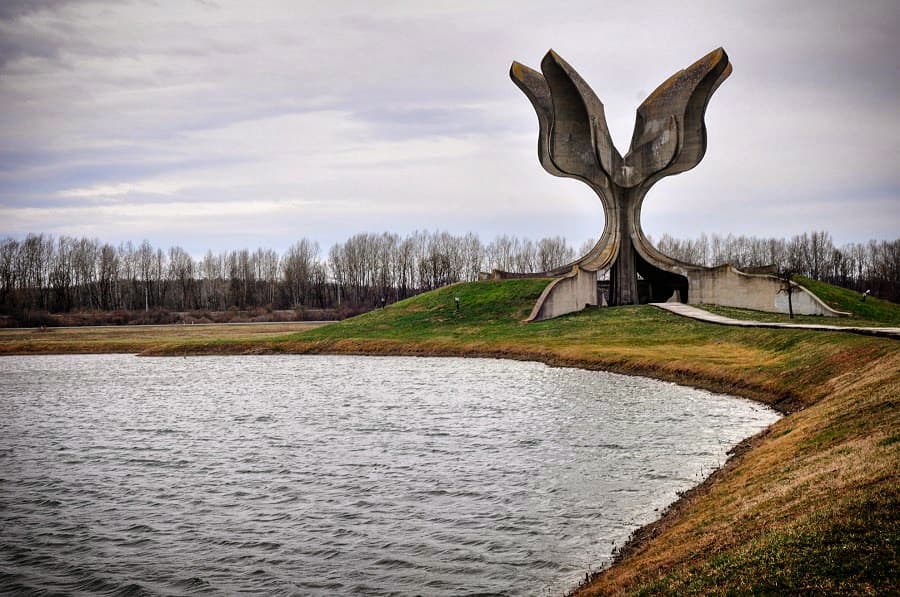
The only structure standing to this day is the Stone Flower Memorial that was created after intense pressure from victims families. It was designed by Bogdan Bogdanović and built in 1966. Many sculptors were asked to present their ideas for such a monument but too many were not considered suitable. Most notably the concept put forward by Croatian sculptor Vanja Radauš. He imagined a massive tomb adorned with skulls surrounded by mourning figures. (below)

When Bogdanović’s design was chosen he stated: “I knew… that I would neither look for nor find inspiration by bringing the evil back to life.” Instead, he imagined a lyrical memorial that stood as a metaphysical statement on meditation, feelings of reconciliation and a “termination of the inheritance of hatred that passes from generation to generation“.
Other smaller flower monuments were meant to mark the notable areas in the camp. However, due to budget constraints, none were ever built and are marked only with mounds of earth.




Perhaps the most moving and notable components of the memorial is the path leading to the Stone Flower. The path was built with railroad ties from the train tracks that once connected the death camps with others in Croatia and surrounding countries and eventually Auschwitz. The very long somber path; a stark reminder of how many lives traveled across these same tracks to their ultimate death.


The Jasenovac camps and Auschwitz were all connected by the same railway system built for the transport of prisoners.



After the end of the war, the burial of the victims and cleaning up of the camp area began. The inhabitants of Jasenovac and the nearby villages used the bricks and other building material from the camp in the reconstruction and building of their houses.
In that way, almost all material evidence disappeared from the place of the largest and most horrendous crimes in the former Yugoslavia. Except for the Sone Flower memorial, it is as if there had not been any camp at all.
Perhaps the most striking, much more than the Stone Flower Monument, are the original train cars remain on the tracks today.

These trains feel like the more honest way to see what remains of the camp. The barbed wire over the single vent window in the train car causes the viewer to really imagine what it would be like to be transported in such a vehicle to your ultimate death….more so than the small museum ever could. It challenges us to face the real horror of what it may have felt like to have been taken from your life and forced into such horror based solely on your race or political view.
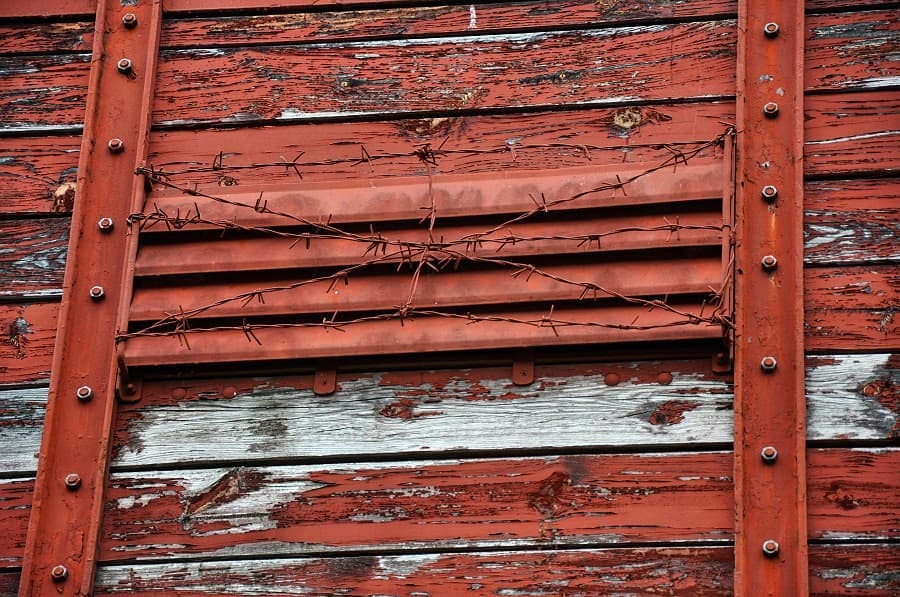

As I understand it, the museum at Jasenovac has received much scrutiny for manipulations and controversies related to the history of the camp. Manipulations in the number of victims, the role of Croatians in the fascist Ustaše regime and manipulations related to the collective memories of Jasenovac. All of these lead to the survival of permanent and conflicting debates in the present that continue to surround the historical narrative about Jasenovac and the role Croatia played in WWII.
This whitewashing of history can be seen in television programming, text books and movies as well. There have been many revisionist films and documentaries about Croatia’s role in the war. In one particular film, the Ustaše are portrayed as Germans with German accents as if not from Croatia at all, but some occupying force.
For the first time since 2014, this year’s commemoration at the Jasenovac memorial (which marked the 75th anniversary of the break-out of inmates) was attended by the entire state leadership as well as ethnic minority groups and antifascists who, for the past six years, had organized their own commemorations arguing that Croatia is trying to rewrite it’s complicated history of WWII.
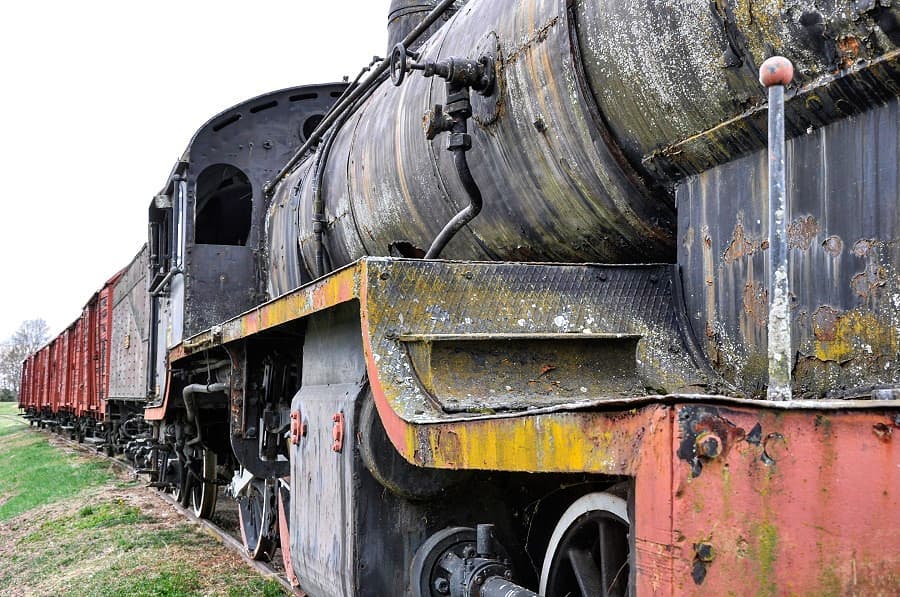

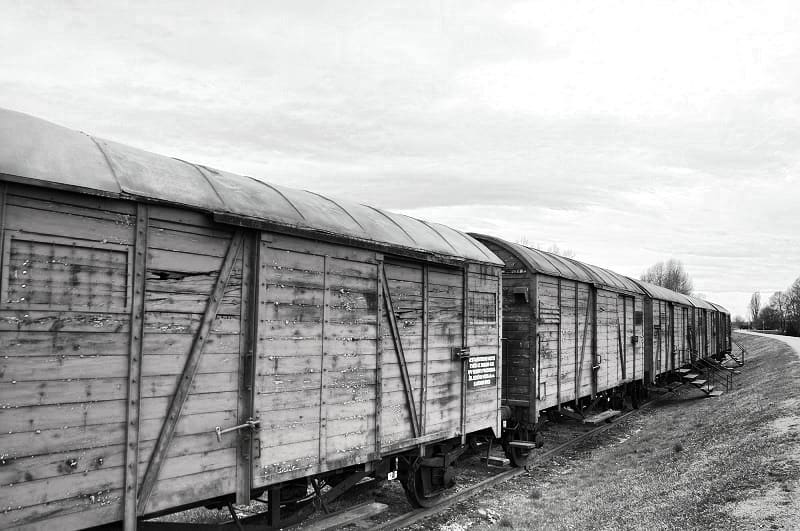
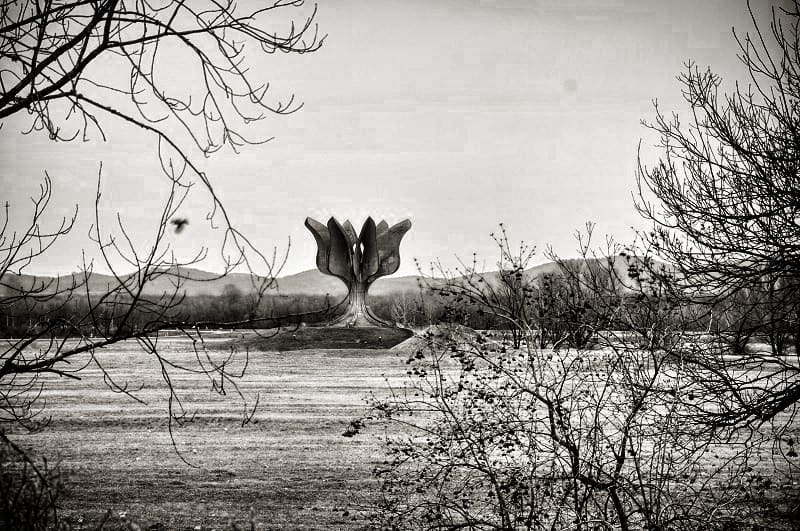
For more information on Nazi collaborators outside of Germany, this is a good resource.

Enlightening article, Emma Lee.
I really had no idea of Croatia’s involvement during the Nazi regime.
Thank you for opening my mind to history, no later how terrifying the information.
We must never let this happen to humanity ever again.
LikeLike
I had no idea either! the Balkans have a very complicated history, even today as ethnic tensions remain strong.
thanks for reading! ♥️
LikeLike